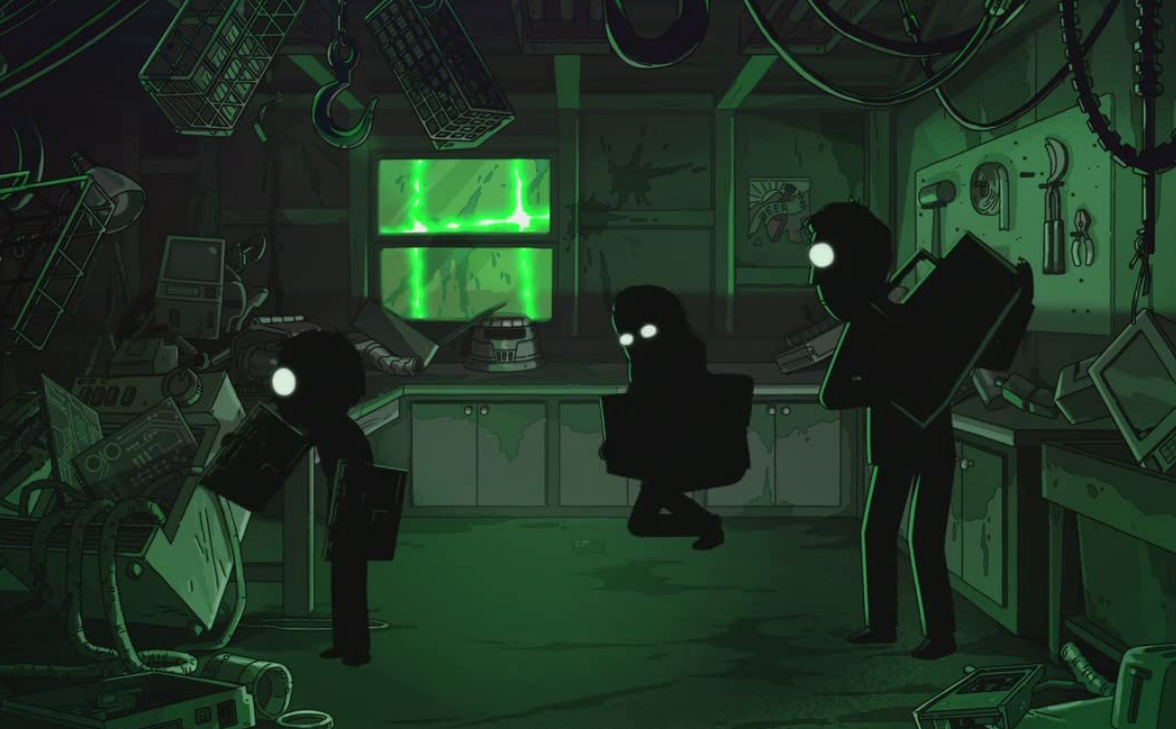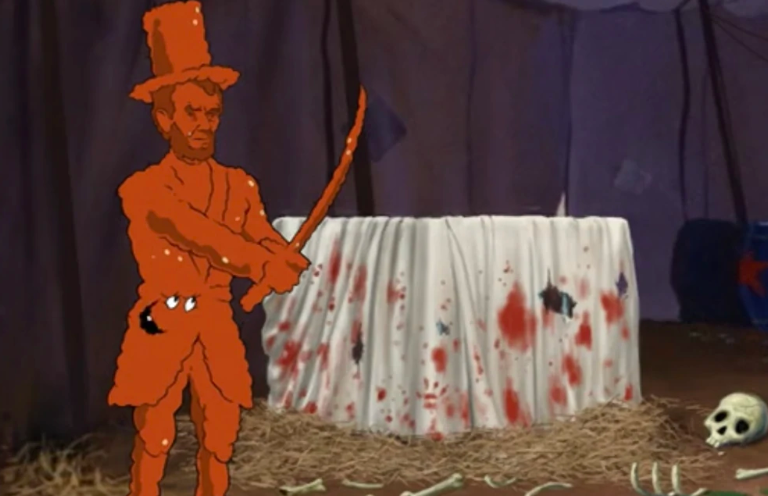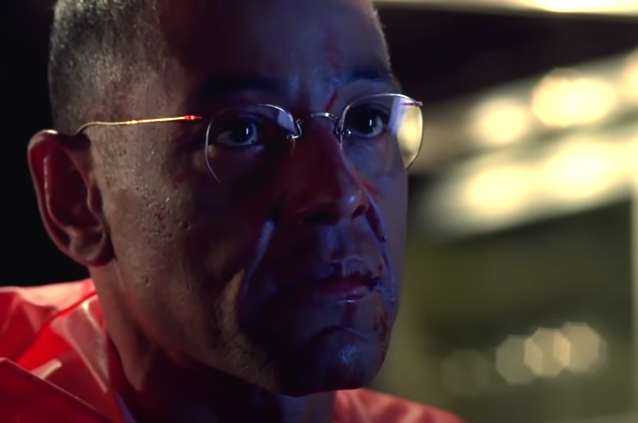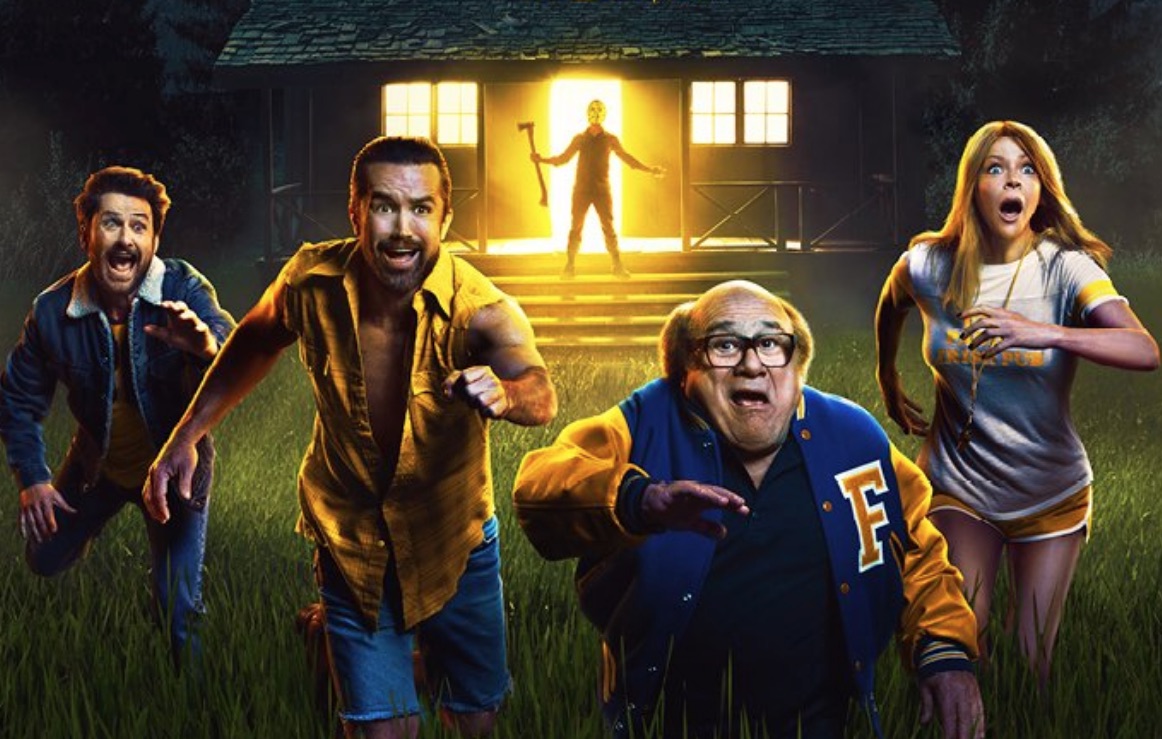
Dark Deviations: 5 Horrific Songs I’ve Found While Casually Streaming
I’ve been listening to a lot of music lately, as one might do if fortunate enough to work from home. Heck, I’ve even put together some Spotify playlists myself during the last few weeks.
However, during idle listening, there’s been a few songs that stood out for being…different than the rest. A little haunted. A bit dark. And, yes, quite the deviation from all the rest.
So, here is a list of 5 songs (so far!) from just casual normal music streaming with horror elements or bizarre implications.
5) Ma Baker by Boney M (found on “Boogie Nights” playlist)
In disco, there are usually the following as topics of interest: dancing, crying, loving, not feeling like dancing, getting a heart broken, and dancing once you find love again. Usually it’s not about a killer gangster from Chicago.
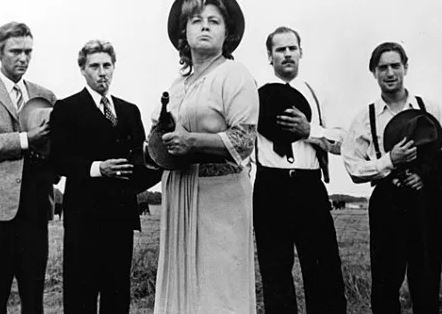
Ma Baker is about “the meanest cat in town” that, with the aid of her four sons, “really mowed them down” and “left a trail of crime across the U.S.A.”. The song was inspired by real-life criminal and public enemy Ma Barker, who actually committed crimes with her four sons, and was killed in a shootout with the FBI in 1935. Hence the line, “she knew how to die.”
While nothing is really offensive and is kind of comical to hear about a 30’s gangster in 70’s slang, it’s still not expected when I throw on a disco station to get down and boogie.
4) Child Molester by The Nuns
This one actually came as not quite a recommendation from a boss but kind of, in a much better way than I’m stating right now. A boss of mine is really into collecting vinyl (I have a mini-passion for it) and he was excited to be able to play records while working from home. I asked him what he played that day because I needed some new things to stream. The first one he mentioned was The Nuns. I was unfamiliar with them.
I am now familiar with them and find him a much more interesting person.

That said…Child Molester. I couldn’t even find lyrics on this beast because no one wants to pay it attention and for good reason. It’s about, well…It’s in the perspective of the child molester, with all anger and rage of being left behind (possibly by a parental figure?) and was turned into this monster due to this rejection. It’s not exactly sympathetic, but it’s not exactly…not, either.
I’m not a punk rock aficionado, but the little I own don’t have anything to do with “walking around like a fiendish ghoul, picking up little 9-year-olds from elementary school” and have a lot more to do with drinking and beating ass.
3) In a Week by Hozier
Hozier is a musician that was kind of in the back of my mind for a while. I have “Take Me to Church” from when it first came out in 2014 and enjoy it from time to time, but never really dove into his other songs. So, when idly jumping around albums, his name came up and I started listening.
In a Week is deceptive. I listened to it a few times actually before really listening to it. It’s a gentle lilt of a song between Hozier and Karen Cowley, slow and sweet like molasses. Soft guitar and gentle voices carrying each other, like walking down a sunny path.

Until you hear the lyrics. Then you realize it’s a soft and gentle song about two corpses – becoming food for the foxes, laid claim by insects, the birds nearing them, scaring the cattle, and decaying together before being found a week later. It talks about their heartbeats slowing and their flesh growing cold, becoming food for the land and animals.
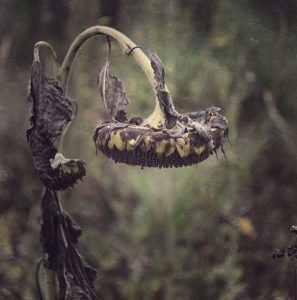
In a way, it’s still beautiful in a death-positive view. It’s not a suicidal type song like Don’t Fear the Reaper, it’s just a calm song about the process of death and the acceptance of that. There’s no malice or fear, just acceptance. Hauntingly open acceptance.
2) Strange Fruit by Billie Holiday (JAM: Jazz Appreciation Month Playlist)
I am well acquainted with this song, as I think you should be, too. It is one of the most powerful songs ever written and performed.
If you are unfamiliar, this song was written originally as a poem, published in 1937. The poem was inspired by a black-and-white photograph of the murders of Thomas Shipp and Abram Smith. Both had been beaten and lynched on August 7th, 1930 in Marion, Indiana in front of thousands of people.

The poem was put to lyrics and was offered to Billie Holiday. She accepted after consideration and fought for the right to record it. And let’s think about that. She was singing this as a standard during the 30’s and 40’s (aka not a great time to sing about this). It’s a very powerful and straight-forward song against lynching and the treatment of Black people.
Again, to put into perspective, lynchings were most frequent from 1890 to the 1920s. From 1882 to 1968, nearly 200 anti-lynching bills were introduced in Congress, and three passed the House. Seven presidents between 1890 and 1952 asked Congress to pass a federal law. Yet not one bill was approved by the Senate. Between the 1877 and 1950 over 4,000 African-Americans were lynched in the South, and that’s not even talking about the Civil Rights Movement of the 1950s and 1960s, where Black activists were routinely attacked and murdered. And to put it in more recent terms, the last reported lynching happened in 1981.

So, when Billie was singing about “blood on the roots” and Black bodies “swinging in the southern breeze” just like “fruit for the crows to pluck” and for “the sun to rot” on that day she recorded in 1939, this was a world she grew up in. It was the reality. She chose to confront it and face any consequence.
Am I saying that it shouldn’t be on the Jazz playlist? No, it absolutely should. But from going from lighthearted songs about sunny sides of streets and pennies from heaven to something so full of raw emotion and so haunting, it’s jarring. Meaningfully so.
1) Ruby (don’t take your love to town) by Kenny Rogers (R.I.P.)
Okay, what the actual f—. I started listening to some Kenny Rogers streams because 1) RIP and 2) my grandpa was a big fan and I vaguely remember it in the background of my childhood. So, I thought it would be a good time of remembering – of recollection and reflection of “grandpa” and the general campy “Southern-ness” that I’ve always associated with Kenny Rogers.
And then I heard Ruby.
It only gets worse as it goes along, too, kind of like the joke-story that starts out, “I’m sorry about your dog.” Except darker.
The song opens to a man watching his domestic partner getting herself gorgeous, and it’s not for a make-up tutorial. She’s going to town and our narrator asks her not to go out and sleep around with anyone. Oof, okay, they’ve hit a rough patch in the relationship.

The next verse we learn he’s a veteran of “that crazy Asian war” and that he’s no longer “the man [he] used to be”, but he still wants her to stay home and be with him. Ouch, okay, so he is suffering from PTSD and she’s pulling away, that’s hard.
It was the next few lines that got me.
“It’s hard to love a man whose legs are bent and paralyzed” Oh…oh God…that’s…

“But it won’t be long, I’ve heard them say, until I’m not around” Holy crap! Ruby! Will you just sit your ass down and play checkers with him or something?!
But no, the narrator tells us, “she’s leaving now ‘cause I just heard the slamming of the door/the way I know I heard its slams one hundred times before”. So, this isn’t the first rodeo of adultery between the couple and it’s no wonder why he’s so depressed.
Man, poor guy, maybe he could-
“And if I could move, I’d get my gun and put her in the ground”

Oh….wow. Well, that escalated quickly.
And it basically just ends there.
I’m still trying to wrap my head around this song. It’s weird when it’s sandwiched in his most popular love songs, like this, too, is a love song. And weirder that it was penned by the guy that wrote things like, “Stomp Them Grapes” and “Loco Weed”.
And the ending seems like an inevitability between the two – he has a gun, he only has a limited time left, he’s got nothing to lose…it all spells a very dark end for what I thought would be a fun romp down memory lane.

Original Creations
Kaidenkai Around the Campfire
I just wanted to post a brief shoutout to Linda Gould of the Kaidenkai to say thank you for including my Around the Campfire story. Feel free to follow this link and give it a listen. I especially love how Ed’s voice is conveyed. You really feel as if you are on the camping trip with everyone.
Around the Campfire sets the tone for the month of August wherein authors are invited to participate in telling tales as part of a whole campfire series, kind of like it did here originally on Haunted MTL in 2022.

I am among the authors who read their own works as well, with The Fur Coat. You can listen to my own reading on the Kaidenkai here. You can also read along with the original as posted here to Haunted MTL in 2020.

Sound
Dolores Roach, The Greatest Threat to Our Survival
We have reached the last episode of the podcast, Dolores Roach. No, this really is the end. There are no more episodes unless they’re hidden away on some Patreon page I don’t have access to.
The reason I’m being clear upfront about this is because, after you listen to this episode, the fact that there are no more episodes is going to be both confusing and infuriating.
The story
This episode begins with Dolores in a tunnel, being chased down by a train. She barely manages to escape, jumping onto a subway platform and then boarding the train that almost hit her.
Dolores is in a state of panic. She just escaped the tunnels. She just saw Mother Cleats killed. Now, she’s on a subway train, surrounded by people she doesn’t know. And she is a mess. She hasn’t showered since going down in the tunnel, after all. She probably doesn’t smell great.
Dolores rides the train to Coney Island and gets off. She walks to the ocean and gets in the water to wash herself. And when she comes out, she’s recognized by an old friend, Georgie.
And it is then that we realize that it’s been Georgie she’s been telling this whole story to.
Seeing the state Dolores is in, Georgie insists that she come home with her. She gets Dolores some clothes and something to eat and makes her tell her everything that happened down in the tunnels.
And then, Georgie’s son comes home. A seventeen-year-old son who looks exactly like Dominic.
That’s where the story ends.
What worked
I had a hard time finding much to like about this finale. If it hadn’t been the last episode it would have been great, but it was.
However, I did like the shift in perspective that takes place when it’s revealed that Dolores has been telling this whole story to Georgie this season. Because of course, up until now, it’s felt like she was talking to us and only us.
What didn’t work
This episode had a lot of problems. For one thing, I didn’t trust Georgie from the start. And that distrust just got worse the more we saw of her. She’s a true crime writer who just happens to find Dolores when she comes out of the tunnels after two months. No, Dolores isn’t buying it and neither am I. And inviting a woman you have reason to believe is dangerous into your home is stupid. No one in their right mind would have done that. No parent would have allowed Dolores within the same block as their child. The whole thing was unbelievable.
But that complaint pales to the largest issue I have for this season finale. For this episode that is, as far as I can tell, a series finale.
I say that because I cannot find another episode listed anywhere. If I were to have just listened to this episode without knowing that, I would have assumed this was just a mid-season twist.
Because that’s what this feels like, a mid-season twist. It answers nothing. It wraps up nothing. It gives us no satisfaction at all. And that is more than frustrating. It is infuriating. It ruins any joy we might have gotten from the rest of the season.
The ending of Dolores Roach was, in short, not an ending. It stopped in the middle of the story, there’s just no way around it. And this episode came out in October of 2019, almost five years ago! I know that podcasts are rather notorious for having long periods between seasons. Mine is no exception, season three of AA will likely not see the light of day until 2025 at the earliest. But after five years I think we can all safely assume that we’re not getting any more episodes. And so Dolores is always going to be in limbo. We are never going to know whether or not Georgie was telling her the truth. We’ll never know what happened to Ginger or Ephraim. We’ll never know what Dolores does, standing in her old friend’s house with what appears to be Dominic’s seventeen-year-old son standing in front of her.
We will never know, because the show is taking an entirely different turn. And so, I’m afraid I have to add Dolores Roach to the same infamous list as Lime Town or The Black Tapes. This podcast was great until they decided to just not end it.
If you’ve waited this long to see if you should listen to Dolores Roach, here’s my advice. Listen to season one, it had a reliable and satisfying ending. But season two should be left in obscurity where all half-finished stories belong.
 (1 / 5)
(1 / 5)
If you’re a fan of my work, please check out my latest story, Nova, on Paper Beats World. New chapters every Monday, Wednesday, and Friday.
Sound
Dolores Roach, Still Twitching
We’ve reached not only the second to last episode of this Dolores Roach season but the series as a whole. If you’ll recall, last episode we were riding the high of a great new villain. We had an unexpected and shocking story arc.
Now, after listening to this second-to-last episode, that high is gone. And we are left with disappointment, lamenting what might have been.
The story
We begin our story with Dolores being shown to her new home. The home she’s to share with Ephraim is considerably smaller than the home they were sharing before.
Ephraim is thrilled. He’s read Mother Cleats’ treatment and is all in.
This doesn’t make sense to Dolores. To her, this place seems like a downgrade. But for Ephraim, it’s a chance to belong. A chance to feel safe, to not fear hunger or violence.
Dolores has no illusions of being safe from that, though. And she’s not thrilled with being drafted as the Chain’s new killer and cook.
She tries to get Ephraim to run with her. Even prison would be better than what she’s facing. But he doesn’t intend to go anywhere.
Next, Dolores tries to get Ginger to go with her. She points out that having a baby in a tunnel instead of a hospital is probably not her ideal birth plan. But Ginger has some sort of strange fit and screams at her.
Dolores is lost, unsure how she’ll ever fight her way through all of these people to get out of the tunnels. But at the last moment, she gets unexpected help from a very unexpected source.
What worked
Let me begin by saying that it’s honestly hard to say that anything worked in this episode. Which isn’t to say that it was bad. The acting was as wonderful as it’s been the whole series. The sound editing was wonderful.
But everything that did work suffered from the pacing. We’ll discuss that more later.
This episode was full of sudden yet inevitable betrayals that I love. I don’t want to ruin the fun for you. But it’s safe to say that no one is on good terms with anyone at the end of this. At least, the people still alive.
I also appreciated the setup for a pivotal death. Early in the season, Ephraim told us that the middle rail was certain death to touch. I think we all knew that this was going to come up eventually. That we would, sooner or later, see someone’s eyes melt out of their sockets. And yes, I’m pleased to say that did happen.
What didn’t work
If the podcast Dolores Roach has a flaw it is in its pacing. And that flaw came very much to light in this episode. Because this should have been at least two episodes.
It was not as fun to see the ending of this episode as it would have been if there had been more build-up. An important character betrayal didn’t mean as much as if there had been more of a build-up.
Overall, this story would have felt so much richer if there had been more room to breathe and experience them. It was as if we were to be served a wonderful meal. And instead of savoring it, we shoveled it down without truly tasting it. And that’s a shame. This seemed like a delicious story. I wish we could have tasted more of it.
Even though there should be more, there is only one episode left of Dolores Roach. And I don’t know how to feel about that. They’ve done everything they set up to do already. So, what’s left for Dolores now? That’s the only question we have left to answer.
 (3 / 5)
(3 / 5)
If you’re a fan of my work, please check out my latest story, Nova, on Paper Beats World. New chapters every Monday, Wednesday, and Friday.


